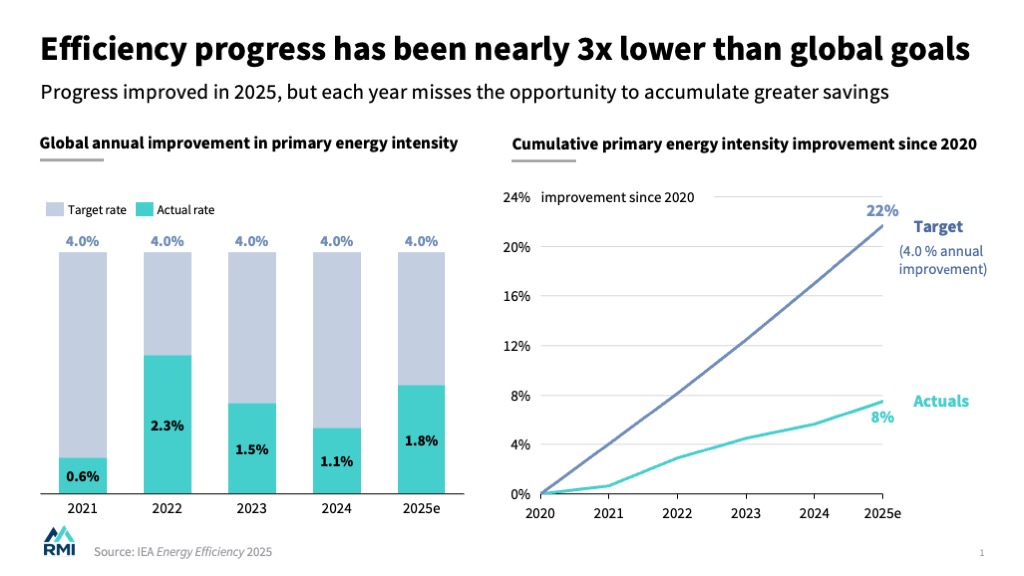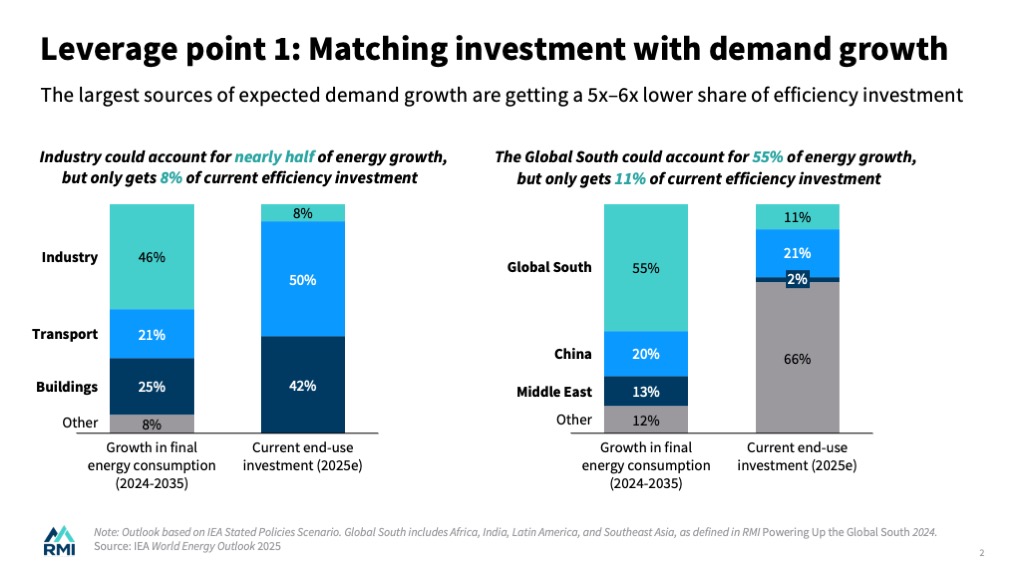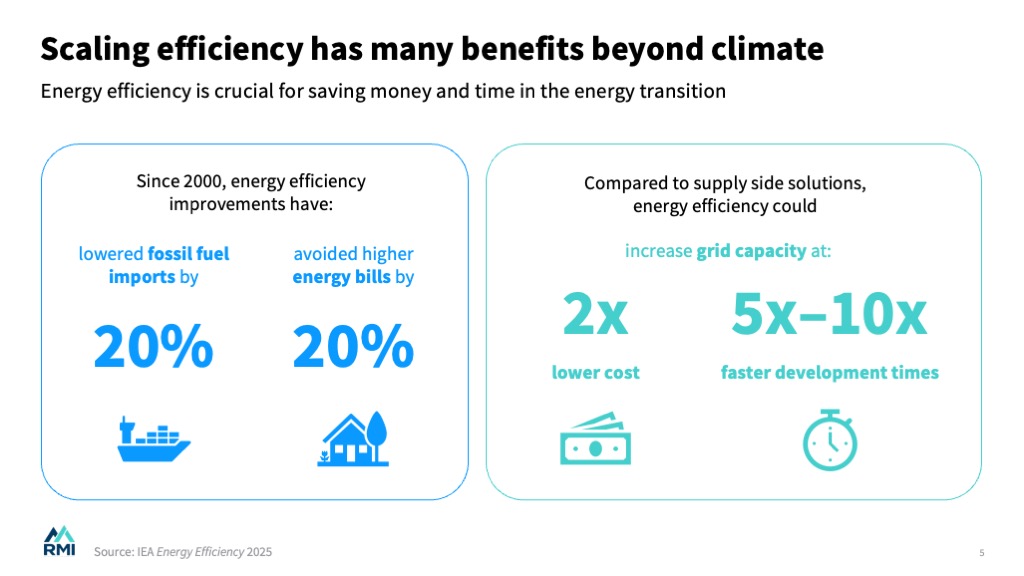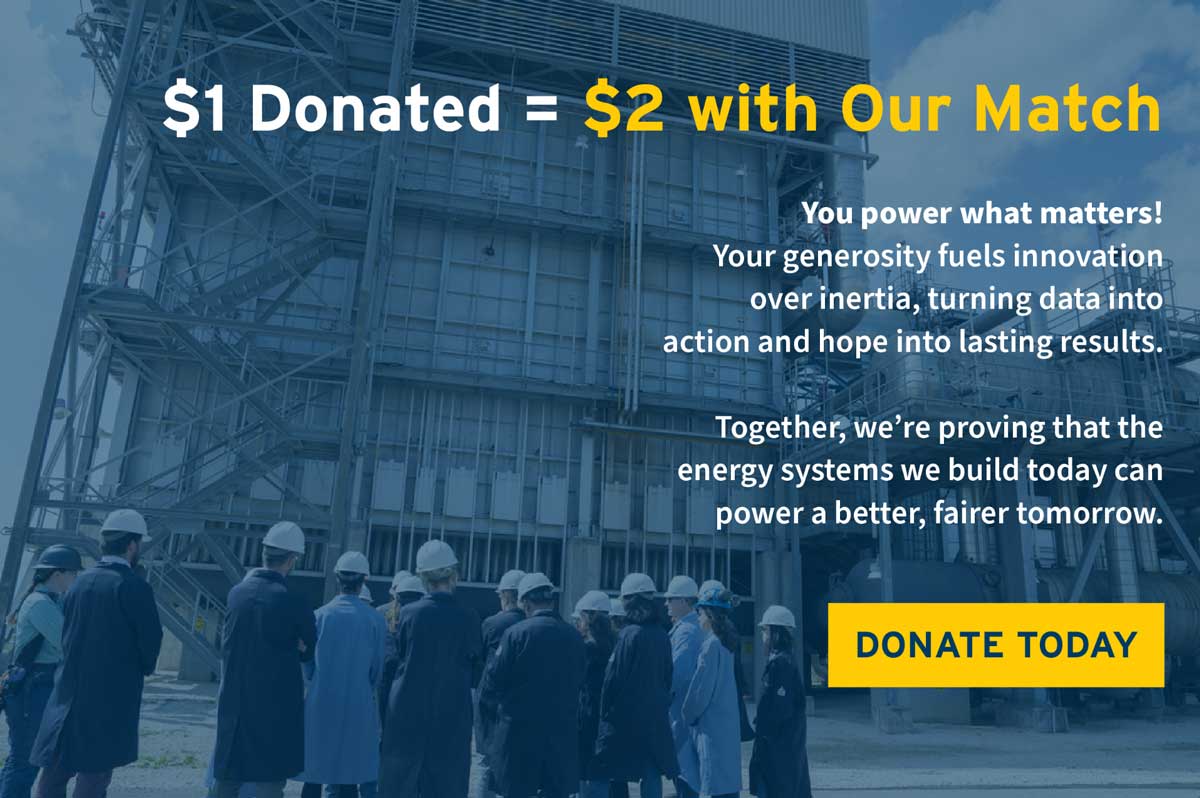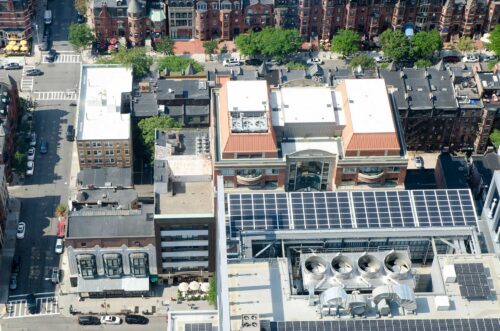
Three Ways to Accelerate Energy Efficiency
A landmark efficiency report highlights key opportunities to bring efficiency closer to its full potential
The year’s most authoritative report on Energy Efficiency is out, and it highlights a stark contrast between what is happening and what is possible. The International Energy Agency’s annual report highlights how on one hand, efficiency improvements are again more than twice as slow as global goals have pledged. On the other hand, it shows that there are key leverage points that could lead to a step change in progress — particularly in sectors, regions, and policy arenas where growth is high but attention is low. Read on as we unpack both sides, as well as the wide-ranging benefits at stake.
Efficiency progress is far behind global goals
Let’s start with the bad news. Despite a small step in the right direction this year, the world is increasingly off track when it comes to energy efficiency goals. In 2023, more than 130 countries committed to doubling the rate of global efficiency improvements, from 2 percent in 2022 to 4 percent annually. But rather than doubling, each year since then has seen progress fall under that baseline. This year’s estimated improvement of 1.8 percent is the best in three years, but it is not nearly enough.
Such stagnation has consequences that compound, like a savings account that has an interest rate far below the full market potential. In the past five years, cumulative efficiency improvements have been nearly three times less than their feasible potential under the global goal and prior IEA modeling. If the world had followed that potential in just these five years, the additional savings in 2025 (for the same GDP) would be 75 exajoules — nearly as much as the total primary energy from all renewables operating today.
IEA’s commentary helps to show why improvements have stalled. Policy progress has lagged behind technology innovation, and resurgent growth across industry, cooling, and electricity demand has not been as efficient as it could be. But now for the good news: the report hints at several key leverage points that can drive a dramatic acceleration.
Leverage point 1: Matching investment with demand growth
The first is to focus on the growth itself. In the next decade, nearly half of energy demand growth is expected to come from the industry sector. And more than half of total energy demand growth is expected to come from the main Global South regions of India, Southeast Asia, Africa, and Latin America. Yet in both cases, their share of energy demand growth is much higher than their share of current energy efficiency investment — which is just 8 percent for industry and 11 percent for those Global South regions put together. If these high-growth areas received more efficiency investment, the new buildout could be achieved in more innovative ways, locking in much higher savings for decades to come.
Leverage point 2: Matching standards with technology progress
Thankfully, there is plenty of innovation that Increased investment could capitalize on, if enabled by key policy standards. In the past 15 years, many markets’ best available products have seen their efficiency double (or triple, in the case of passenger cars). Standards have improved as well, but at a rate that is several times slower. Key equipment could be twice as efficient (or more) if the standards matched best available technologies.
A major example is the air conditioner. According to the IEA: “if every air conditioner bought since 2019 had been the most efficient available, the world could have avoided electricity demand growth equivalent to the demand growth from data centres over the same period.” In India, nine months of field testing by RMI and partners has shown that super-efficient air conditioners — designed and optimized for real-world conditions by managing both temperature and humidity — can save at least half of an appliance’s energy use, costs to households, and contributions to peak electricity demand compared with typical units. Updating the testing and performance standards to reflect real-world energy use and comfort (instead of assessing energy use on temperature alone) could catalyze a wave of superior products and save trillions in the years ahead.
Leverage point 3: Adding standards to build right the first time
Beyond what exists, there is ample room to add additional standards for greater efficiency. Most of the world has efficiency standards for cooling and cars, but coverage declines as we look to other sectors.
Globally, only two-thirds of energy demand from lighting is covered by a policy standard, despite the strong economic case (as with India’s zero-subsidy UJALA program, which is saving billions of dollars in annual electricity costs). Only 60 percent of new buildings are covered by an energy code. And less than half the world has an efficiency standard for cooking appliances and industrial motors — even though cooking is the largest contributor to global air pollution deaths, and motor systems are the largest contributor to industrial electricity demand (accounting for an astounding quarter of total global electricity use).
In many cases, efficiency standards are missing precisely where energy demand is projected to grow the fastest. Filling those gaps would be a powerful way to accelerate progress.
How we get there, and the benefits that are possible
As we consider these leverage points, there are many crucial enabling conditions. Below are three from Mission Efficiency, a global ecosystem of organizations seeking to catalyze change. There are many more details under the Global Ambition Taskforce, including new sets of case studies and cross-sector calls to action.
- Capacity. Double the number of efficiency jobs, while investing in training and one-stop shops to scale building renovation and other improvements.
- Capital. Triple investment for energy efficiency from 2022 to 2030, to more than $1.8 trillion per year globally.
- Collaboration. Strengthen existing alliances (such as the Cool Coalition) to accelerate implementation, while supporting collaborative research, innovation, and deployment activities at the local and international level.
If efficiency can accelerate, the multiple benefits will further multiply. Since 2000, efficiency has helped key geographies save 20 percent on fossil fuel imports, household energy bills, and energy-related emissions. Energy efficiency is clearly critical to saving money. But it is also critical to saving time, in terms of grid buildout in this new era of load growth. In fact, efficiency measures can increase grid capacity at five to ten times the rate of supply-side additions or new infrastructure.
The key mindset shift is to think in systems, following RMI’s cofounder Amory Lovins and decades of RMI work to expand our vision for what’s possible. From industrial hubs to land use reform, cross-sector improvements can help the targeted leverage points reach even further. When we think bigger, we can scale efficiency from being invisible to being immensely valuable.
